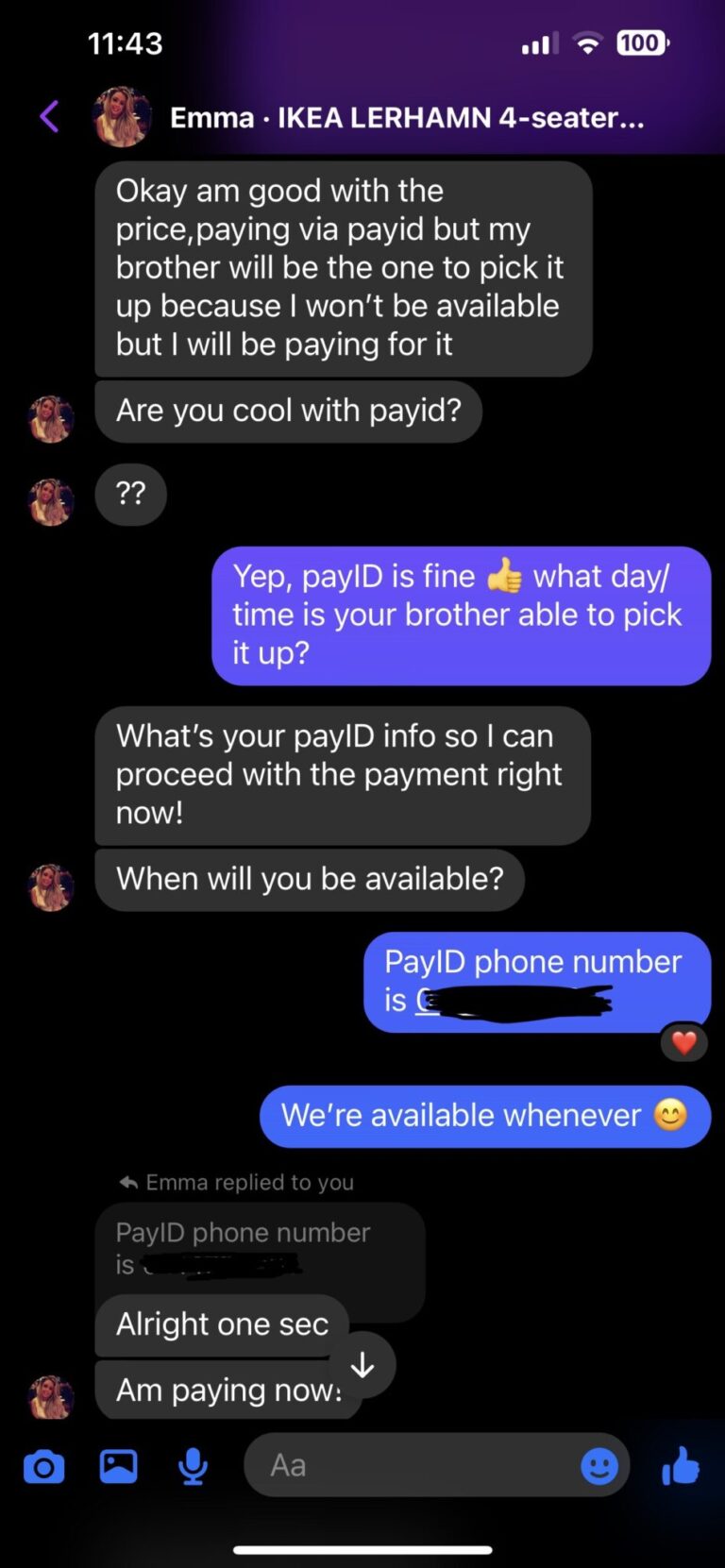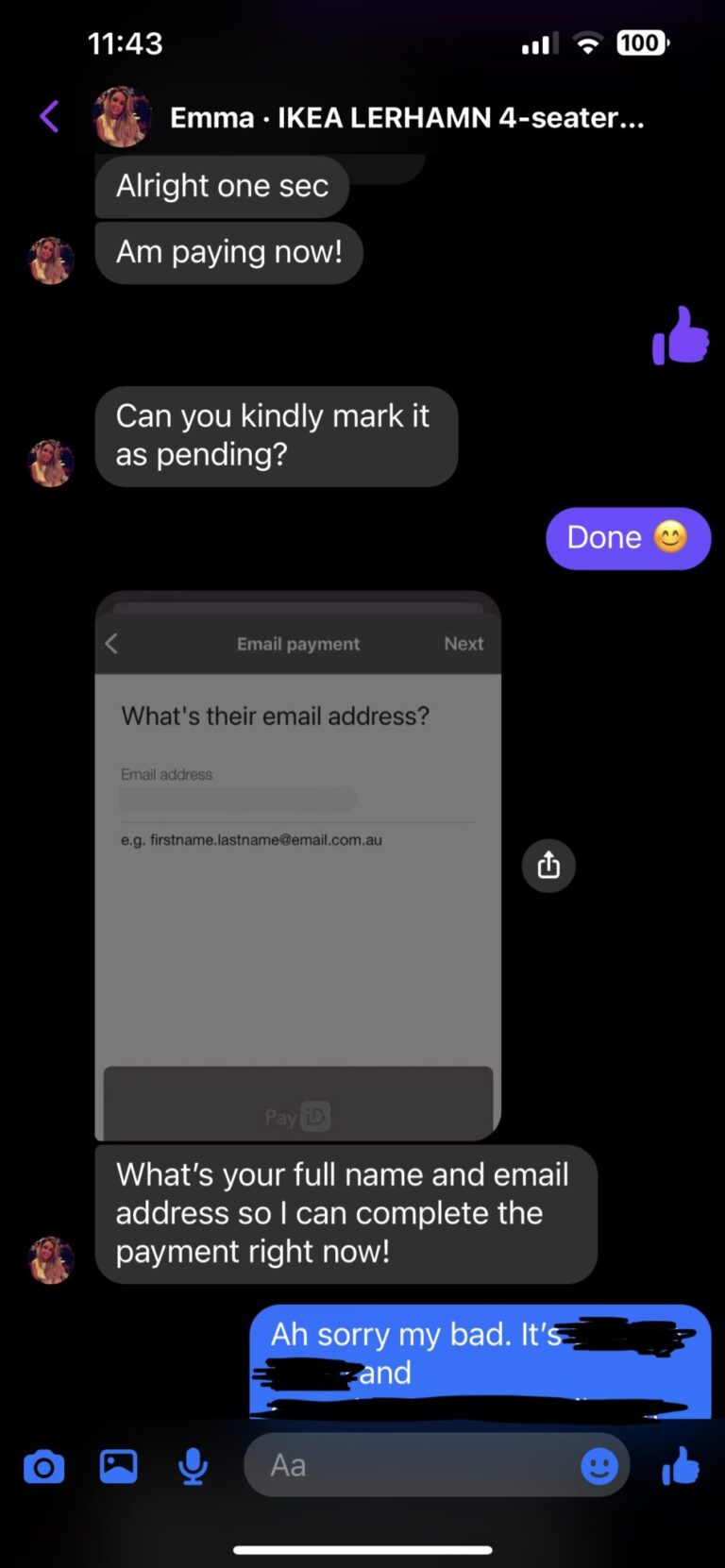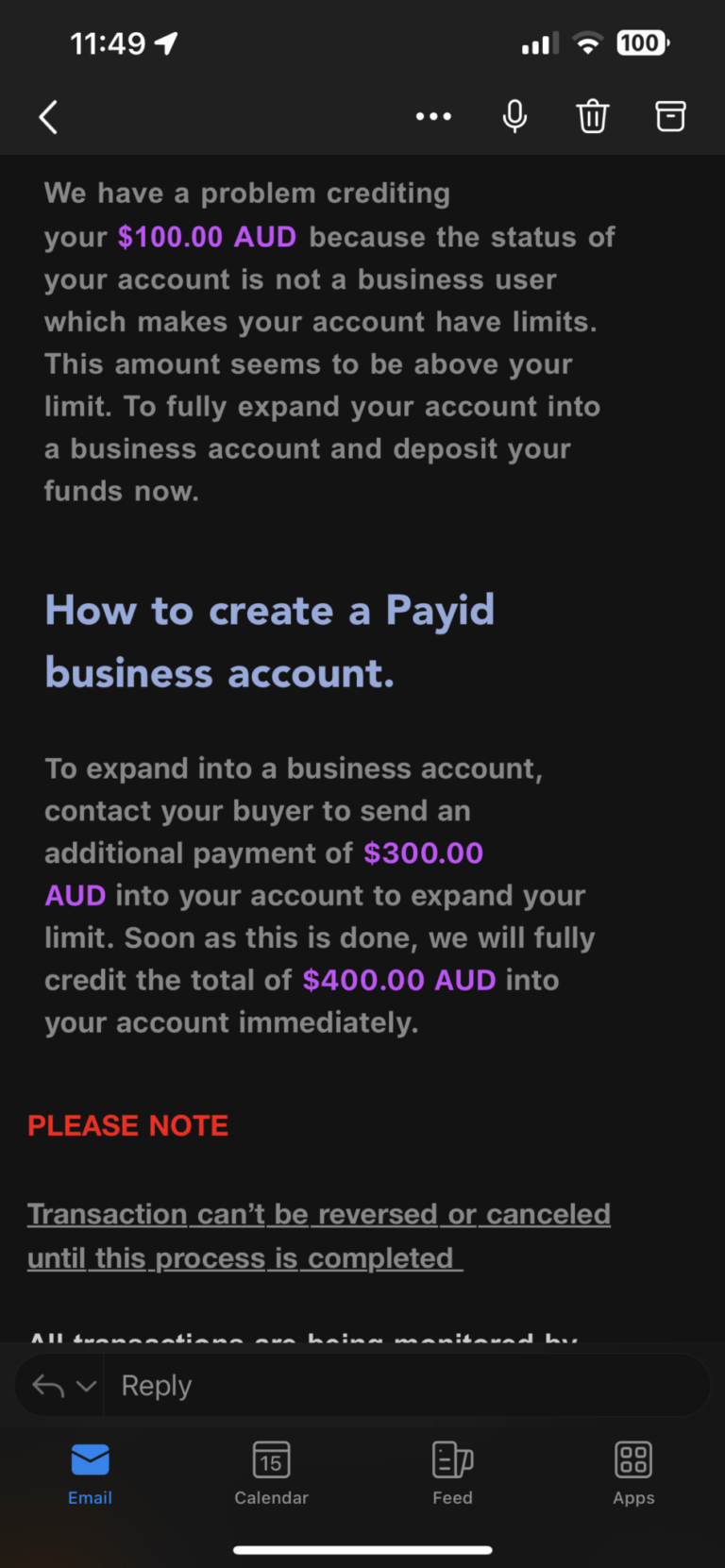Picture this. You've been trying to sell your sofa for months. You're desperate for a buyer. You've changed the price a few times hoping for a bite, but to no avail, no one wants to buy your sad beige couch. But then, you receive a message. Someone wants to come collect it – today!
You're so rushed to offload the bulky piece of furniture that you realise you have no idea how PayID works. You know your friends have used it before, so it must be safe. You answer the buyer's questions and do what they ask of you. Now you're out $500 and you still have your couch.
Even though PayID is safe, knowing how it works is key to protecting yourself and your money.


